National
The elements of Marc Garneau – A special report from Paul Wells
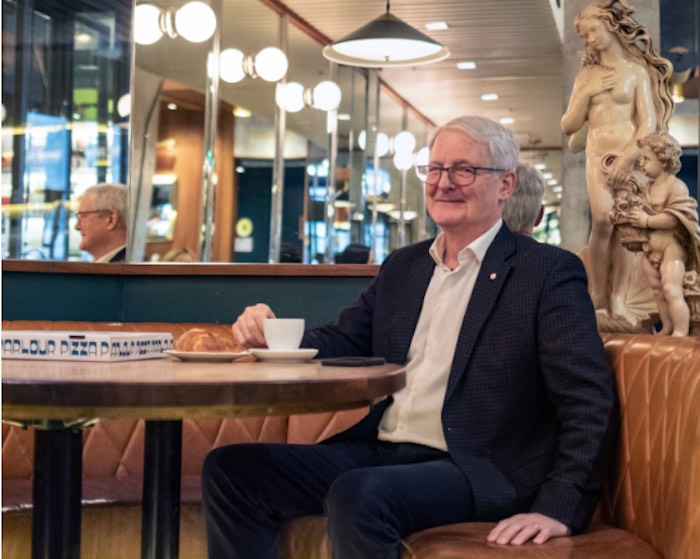
|
|
He was trained to admit every error. Then he went into politics. A feature interview with the retiring MP for Notre-Dame-de-Grâce—Westmount
Introduction
When you resign your seat in the House of Commons, you get to keep your phone for 90 days. The deadlines for cleaning out your offices on Parliament Hill and in your riding are tighter but still civilized. Soon Marc Garneau will leave his constituency office on the third floor of a nondescript office building in Westmount, the affluent anglophone enclave west of downtown Montreal, for the last time. But there’s no rush, so he met me there on Monday.
Trying to get politicians to speak frankly while they’re still in office is not always rewarding, It gets easier quickly once they leave. So I thought a visit with Garneau was worth the drive to Montreal, even though he’s been cagey in his remarks to journalists since he announced his retirement on March 8. I’ll cut to the chase: His interview with me wasn’t the work of a rebel either. Garneau remains a gentleman and a Liberal. He offered only praise for Justin Trudeau. But on several issues — communications philosophy; the handling of the Freedom Convoy occupation of Ottawa; and the proper attitude toward one’s own fallibility — he drew occasional sharp distinctions between his attitude and the Trudeau government’s.
I took the scenic route to get to that stuff. Garneau was the first Canadian to fly in space. He was a national celebrity before Trudeau finished high school. And while that’s a historic distinction, Garneau shares with many more parliamentarians a long career outside politics that preceded, and informed, his career in elected office. Not all of that is the stuff of every conversation, but this one was valedictory in tone. I thought it best to start at the beginning.
This is an unusually long post on the Paul Wells newsletter. I figured I owed everyone a good feature read. I’m leaving the paywall off. You can help spread word about the writing I do by sharing this with a friend or with your networks.
I also want to remind readers that writing this newsletter is what I do for a living. When you decide to become a paid subscriber, you help support this work. You also make it possible for me to do things too few of my colleagues elsewhere are able to do — things like travelling, or paying a professional photographer properly to illustrate my work.
1. Water
I began by asking him about the year and a half he spent as a combat systems engineer on the HMCS Algonquin. When he arrived on board, it was the newest destroyer in the Canadian Navy.
“It was what I had dreamt of from the beginning of my life,” he said. “My first love was the Navy.” His father’s family was francophone Quebecers, soldiers from way back. His father fought in the infantry in WWII and was posted in Germany for two years as the Cold War settled in. “I crossed the ocean with my parents in 1956 coming back from Germany,” he said. “We came back on a ship that was on its last voyage, the Samaria, and I just fell in love with the ocean. A few years later, we went back to England on the Empress of Britain. Those confirmed for me that I wanted to be in the Navy.”
The Algonquin, a big boat with 280 crew, spent three months doing exercises as part of STANAVFORLANT, NATO’s multinational Standing Naval Force Atlantic, which would pretend the Soviet Union was up to various kinds of risky business and figure out ways to respond. Off Puerto Rico he led tests of the new Sea Sparrow missile system. Around Newfoundland’s outports, the Algonquin took the province’s lieutenant governor on an annual tour.
Young Garneau wasn’t particularly interested in moving up the ranks. “I’m an engineer. I didn’t want to be the ship captain. I wanted to be the engineer that kept the equipment going. That may not sound very exciting. But for me that was exciting, because it’s quite a job to keep all that equipment operational in case you had to go into conflict.”
2. Air
Advancement for its own sake held no appeal. But when he saw a nondescript ad from the National Research Council calling for applicants for Canada’s first astronaut corps, that sounded better than a promotion. “Wow. The idea of possibly going into space just blew me away. At the same time, I thought my chances [of being chosen] were pretty close to zero.”
In May of 1983 there were 4,200 applicants. Six months later, six remained. It became clear pretty soon the program wasn’t just looking for technical expertise but for — well, for heroes. Or at least for people who wouldn’t screw up the illusion.
“They wanted us to write essays about why we thought that we were particularly well suited. Did we realize that we would become public figures? And were we ready for that? And did we think it was important for Canada? Medical [exams] like you’d never had before. Every single thing checked, because you had to be 100% fit. Then they brought us in for the last week and and they subjected us to a whole bunch of things.
“We had to give presentations in front of the selection board. Any attempted humour was met with a stone-cold face. I remember coming out of it thinking, ‘I’ve totally bombed this.’ But they’d all been trained not to react to anything.
“Do you remember somebody called Keith Morrison?” I sure do. TV reporter and anchor, CTV to the CBC to NBC. He actually interviewed me once, when that was an odd thing to do, and I remember he was good at it. “Well, Keith was hired for the week. And he put us through our paces, sort of doing the interview thing. So that was another thing they wanted to know, if you’d be able to do that. They had us in social settings, like a cocktail kind of thing. [They wanted to see] whether you were relatively comfortable in the company of total strangers, that kind of thing. So it’s a pretty thorough week. And by the end of that, they said, ‘Look, stand by your telephone between five and seven on the third of December and you’ll get a call.’ We’re 20 at that point. ‘It’ll either be to say, sorry you didn’t make it, or, you made it.’ And I was fortunate to be one of the six chosen. They called about six o’clock. They didn’t beat around the bush. ‘Look, you made it. Congratulations. Keep it private and we’ll trot you out on the following Monday.’ Which they did.”
When you know what happened next in Garneau’s career, all this prodding and profiling and media scrutiny takes on a different meaning. He started to meet prime ministers.
Pierre Trudeau: “Man of powerful intellect. Everyone knows that. There are warmer people than Pierre Trudeau. But very cordial.”
Brian Mulroney: “Mulroney had just been elected. He wanted to meet Ronald Reagan right away… I was summoned, along with two of my crew members, Bob Crippen and Kathryn Sullivan. Which, by the way, is a total no-no. You do not take the next crew that’s going to fly in three weeks out of their bubble of training and getting ready. Except if it’s POTUS. Reagan thought it was good idea, so we were summoned. I spent time in the Oval Office with with Reagan, whom I liked right away, and Mulroney, whom I also liked right away…. I was even at the Shamrock Summit a couple of months later in Quebec City. I wasn’t quite so happy with what PMO told me to do, which is to come up through the floor on a thing that was raising me up with smoke and lighting on me, dressed in my flight suit, and having to say, ‘Take me to your leader,’ which the crowd liked. And I thought, ‘I’m making a fool of myself here.’”
On the first trip, Garneau was a payload specialist, which meant he had responsibility for a suite of Canadian scientific experiments and little else. But he had two audiences he wanted to please. NASA was the first. “I had to make a good impression so that, based on a sample of one, they’d say, ‘Okay, he did pretty well. Let’s keep inviting Canadians to fly.’ And quite a few Canadians have flown.”
Canadians were the second audience. “I wanted Canadians to be proud of me.”
Both audiences gave him the thumbs up. Today there’s a high school in Toronto named after him. In 1992 Garneau and Chris Hadfield reported for training to become mission specialists, with much broader responsibility for mission success. It took another year of training before Garneau was eligible for his second flight, in 1996. His third and final mission was at the end of 2000. There were Russians waiting at the International Space Station when the shuttle Endeavour delivered Garneau and the others. Relations with Russia were as warm as they’ve ever been. “It was more than cordial. Frankly our lives depended on one another.”
It was a longer acquaintance with higher stakes than most of us ever experience. “One of the things I loved the most about NASA was that if you fuck up” — he paused before using the salty word — “you confess. That is the culture there.”
Probably this does not need to be spelled out, but here goes anyway. This culture of honesty was not a simple preference. Shuttle crews rode a lake of liquid fuel and twin towers of solid fuel at speeds their own ancestors could not have imagined. If a bug slipped into the system it could kill them and set spaceflight back decades, as indeed it did, twice. Owning up to error was the primary method of keeping colleagues, and the dream of spaceflight, alive.
“I did hundreds of simulations. I was the first non-American CAPCOM ever. CAPCOM’s the guy who talks to the crew in orbit for Mission Control. And we did hundreds of simulations. I covered 17 missions, just as CAPCOM. And after every simulation, where the crew, perhaps, had not picked up the problem and had not reacted properly to it, we’d do a post mortem.
“And that culture of honesty and openness, which you absolutely need in the space business — you can’t have people making excuses or trying to hide things — that’s what I love the most. And I wish it existed in all facets of life, including the one I ended up in.”
3. Earth
Garneau first ran for Parliament in 2006, just west of Montreal Island, and lost, in the first of three elections when losing was most of what Liberals did. He was interested in Outremont in a 2007 by-election. So was Justin Trudeau. Stéphane Dion was the leader, though, and he thought a political scientist was just the ticket. Dion’s designated nominee, Jocelyn Coulon, did not fare well.
In 2008 Garneau inherited the Liberal nomination, essentially a Wonka golden ticket, in Westmount, as solid a Liberal fortress as any in Canada. Only a catastrophe could lose Westmount for the Liberal. In 2011 it almost happened — Garneau beat the New Democrat by only 642 votes in the party’s worst national defeat in since Confederation. Soon Peter C. Newman had a book out proclaiming the Liberals were history.
“There’s something intimate about being only 33 [MPs in the Liberal caucus], Garneau recalled. “We got to know each other in a kind of a relationship that you don’t get when you’re 150 or 160. So I really enjoyed the collegiality of having that small, small group. Although of course I was hoping it wouldn’t last too long.”
In 2013, Garneau, who hadn’t been interested in commanding a ship, decided to try his chances with a political party. He ran for the Liberal leadership. He had competition.
“I personally believe that I had good policy that I put in the shop window. What I didn’t have — what I still don’t have — is charisma. I’m not interested in charisma, by the way. I’ve lived my life very well without charisma. And I’m not saying the electorate chooses on a superficial basis. But there was something about Justin Trudeau that was incredibly appealing to people.”
Garneau bowed to the inevitable and dropped out of the race. Eighteen months later he was co-chair of the Liberal Party’s “International Affairs Council of Advisors,” with a threefold mission: Figure out the party’s foreign policy; teach foreign policy to a leader with extremely limited experience in the field; and be seen showing interest in foreign policy. The group met regularly. “Trudeau only came occasionally to meet everybody and to sort of stir stir things up and have a really good discussion,” Garneau said.
4. Fire
As co-chair (with Andrew Leslie) of Trudeau’s Council of Advisors, Garneau figured he had a good chance to become foreign minister. He got Transport.
“You know, I’ve lived 17 years of my life abroad. And I love foreign policy. I wasn’t expecting Transport. And it turned out to be a job I loved. Although at first I thought, ‘Why’d he put me in transport?’
“When I got the call that, you know, ‘The Prime Minister wants to meet you,’ I thought — This is after the vetting process, ‘Are there any skeletons in your closet?’ — I thought, ‘What’s he going to put me in?’ I thought, Defence because of my background. I was in the regular forces. Or I thought, then, maybe Industry, because I was the president of the Canadian Space Agency and I worked for the Minister of Industry, Science and Technology at the time. And maybe even Foreign Affairs, because he’d had me in this job for the past two years. I wasn’t expecting Transport.” Garneau chuckled at the incongruity of it. “But now, after a little while, I saw the logic of it. I was in the Navy, ships, so I know the marine environment. I know the air environment. And so there is a certain logic to it. And it’s a job that I came to love.” He held the post for five and a half years. Only David Collenette and Lionel Chevrier lasted longer.
The new governing caucus had five times as many MPs as the Liberal caucus it replaced. “It was a heady experience,” Garneau said. “And there was a certain amount of chaos, which is understandable because it takes a couple of years to learn the basics of your job.”
It must have been a management challenge for the Prime Minister’s Office, I ventured. To have a finance minister, health minister, justice minister, defence minister who’d never been Members of Parliament before, let alone cabinet ministers. How did the PMO handle that? “It was a little bit like when you see kindergarten children all tied up with ropes, going down the street.”
Did the control ever chafe? “I had some times where I felt one way and and I felt that the centre did not necessarily agree with it. Yeah. That comes from the dynamic. If you’ve got your mandate letter, and you interpret that mandate letter the way you feel it must be implemented — you know, the vast majority of the time, no problem. But there was the odd occasion. You’ll forgive me if I don’t go into details on it. But I was very conscious of the fact [that] you have a chief of staff, your chief of staff is a key person for you. But that chief of staff reports to you, but also must report to the chief of staff of the Prime Minister. I made an indirect reference to it in my parting speech, that I sometimes made their life difficult because I might have wanted to go one way whilst the center didn’t necessarily want to go that way.”
We had been talking for more than an hour. I asked Garneau about the Freedom Convoy of January and February 2022, which has been on my mind. Specifically, I asked Garneau about his Liberal caucus colleague Joël Lightbound, who held an astonishing news conference in the second week of the Ottawa siege to say the Liberals’ COVID policy “stigmatizes and divides people.”
“I definitely took very much note of it,” he said of Lightbound’s surgical sortie. “Some of what he said is true. There were people on the Hill that were not extremists. They were just there because they felt that their rights were being not respected.” He faced his share of verbal abuse as he made his way to and from the Hill, but even still —
He paused. “I’ll be very candid. I don’t think we handled it as well as we could have.”
In what sense? “I think there was a sense that, ‘We’re not going to talk to you people. You’re just a bunch of troublemakers.’ I had always been brought up to not avoid dealing with difficult issues. This was an incredibly difficult issue.” Another pause. “So that’s just my personal comment.”
The other thing I wanted to ask him about was the tremendous controversy he and two other back-bench Liberals have stirred up over the interaction between Quebec’s newly beefed-up language law and Bill C-13, which proposes amendments to the federal Official Languages Act. This has put Garneau and his colleagues squarely on the side of Montreal’s anglophone population against a majority of Quebec’s elected politicians. And it’s brought Garneau in for some unaccustomed criticism. Barely two weeks before he resigned, he was complaining about the rough ride from Quebec commentators on Twitter.

12:40 PM ∙ Feb 18, 2023
Garneau’s comments on this were long, and would constitute inside baseball for most readers outside Quebec, but he didn’t like seeing Quebec’s language laws incorporated by reference into a federal bill. “I have very rarely disagreed with my party, but I disagreed with them on that.” It got worse for Garneau when he read 88 amendments introduced by the Bloc Québécois, five of which said that in case of a conflict between federal and provincial legislation, Quebec’s should predominate. Those amendments were eventually rejected, but by then Garneau was already on the record with his concerns. “I’m always ready to face criticism, but it got personal. And I think that’s sad.”
The controversy has been a much bigger deal inside Quebec than outside, but Garneau insisted it’s not why he’s leaving politics.
The reason I’m leaving is because I made that promise to my wife, and to my family. I actually told him after the 2019 election that that was my last election. I had been reappointed to Transport. And I thought, ‘Okay, this is a lovely way to finish.’
“Then in January of 2021, to my great surprise, the Prime Minister [shuffled Garneau.] I think it was motivated by the fact that Navdeep Bains pulled out. The Prime Minister, I personally think that he said, ‘Okay, I want François-Philippe to take over from that. And there’s a bit of musical chairs and I ended up in foreign affairs.
“But seven months later, an election was announced. And I felt, in all good conscience, that after seven months in that portfolio — to now say, ‘Sorry, I’m leaving,’ when I had been the fourth appointed in under six years, it just wouldn’t have been right.
“Now, if the prime minister had told me, ‘Mark, after this election, you won’t be in the cabinet,’ I wouldn’t have run. But he didn’t tell me that.
“I ran hoping to go back into that job. Because Lord knows there were things that I wanted to do. With respect to Afghanistan, China, the Indo-Pacific strategy, I’d been working all that stuff. But the bottom line was that he said, ‘You’re not in cabinet anymore.’
“And so, at this point, I felt it would be really not acceptable for me to say, ‘Okay, thank you for electing me three weeks ago, I’m leaving.’ So I felt I needed to put in some time. To my great personal satisfaction, I was given two things that I really enjoyed. One was to be chair of the Indigenous and Northern Affairs Committee, which I think has an important role with respect to reconciliation. And the other one was kind of unexpected… medical assistance in dying, where I was co-chair with a senator on this special mixed committee.”
That committee presented its final report in February. Garneau resigned three weeks later. He was already in the history books before he ever ran for office. Would he run now, in the atmosphere of today’s politics, if he were just starting out? Is there still room in politics for an engineer who just wants to make things work better? These are eternal questions, and I had already asked Garneau enough questions for one day.
For the full subscriber experience, upgrade your subscription.
Agriculture
Why is Canada paying for dairy ‘losses’ during a boom?

This article supplied by Troy Media.
Canadians are told dairy farmers need protection. The newest numbers tell a different story
Every once in a while, someone inside a tightly protected system decides to say the quiet part out loud. That is what Joel Fox, a dairy farmer from the Trenton, Ont., area, did recently in the Ontario Farmer newspaper.
In a candid open letter, Fox questioned why established dairy farmers like himself continue to receive increasingly large government payouts, even though the sector is not shrinking but expanding. For readers less familiar with the system, supply management is the federal framework that controls dairy production through quotas and sets minimum prices to stabilize farmer income.
His piece, titled “We continue to privatize gains, socialize losses,” did not come from an economist or a critic of supply management. It came from someone who benefits from it. Yet his message was unmistakable: the numbers no longer add up.
Fox’s letter marks something we have not seen in years, a rare moment of internal dissent from a system that usually speaks with one voice. It is the first meaningful crack since the viral milk-dumping video by Ontario dairy farmer Jerry Huigen, who filmed himself being forced to dump thousands of litres of perfectly good milk because of quota rules. Huigen’s video exposed contradictions inside supply management, but the system quickly closed ranks until now. Fox has reopened a conversation that has been dormant for far too long.
In his letter, Fox admitted he would cash his latest $14,000 Dairy Direct Payment Program cheque, despite believing the program wastes taxpayer money. The Dairy Direct Payment Program was created to offset supposed losses from trade agreements like the Comprehensive Economic and Trade Agreement (CETA), the Comprehensive and Progressive Agreement for Trans-Pacific Partnership (CPTPP) and the Canada–United States–Mexico Agreement (CUSMA).
During those negotiations, Ottawa promised compensation because the agreements opened a small share of Canada’s dairy market, roughly three to five per cent, to additional foreign imports. The expectation was that this would shrink the domestic market. But those “losses” were only projections based on modelling and assumptions about future erosion in market share. They were predictions, not actual declines in production or demand. In reality, domestic dairy demand has strengthened.
Which raises the obvious question: why are we compensating dairy farmers for producing less when they are, in fact, producing more?
This month, dairy farmers received another one per cent quota increase, on top of several increases totalling four to five per cent in recent years. Quota only goes up when more milk is needed.
If trade deals had actually harmed the sector, quota would be going down, not up. Instead, Canada’s population has grown by nearly six million since 2015, processors have expanded and consumption has held steady. The market is clearly expanding.
Understanding what quota is makes the contradiction clearer. Quota is a government-created financial asset worth $24,000 to $27,000 per kilogram of butterfat. A mid-sized dairy farm may hold about $2.5 million in quota. Over the past few years, cumulative quota increases of five per cent or more have automatically added $120,000 to $135,000 to the value of a typical farm’s quota, entirely free.
Larger farms see even greater windfalls. Across the entire dairy system, these increases represent hundreds of millions of dollars in newly created quota value, likely exceeding $500 million in added wealth, generated not through innovation or productivity but by a regulatory decision.
That wealth is not just theoretical. Farm Credit Canada, a federal Crown corporation, accepts quota as collateral. When quota increases, so does a farmer’s borrowing power. Taxpayers indirectly backstop the loans tied to this government-manufactured asset. The upside flows privately; the risk sits with the public.
Yet despite rising production, rising quota values, rising equity and rising borrowing capacity, Ottawa continues issuing billions in compensation. Between 2019 and 2028, nearly $3 billion will flow to dairy farmers through the Dairy Direct Payment Program. Payments are based on quota holdings, meaning the largest farms receive the largest cheques. New farmers, young farmers and those without quota receive nothing. Established farms collect compensation while their asset values grow.
The rationale for these payments has collapsed. The domestic market did not shrink. Quota did not contract. Production did not fall. The compensation continues only because political promises are easier to maintain than to revisit.
What makes Fox’s letter important is that it comes from someone who gains from the system. When insiders publicly admit the compensation makes no economic sense, policymakers can no longer hide behind familiar scripts. Fox ends his letter with blunt honesty: “These privatized gains and socialized losses may not be good for Canadian taxpayers … but they sure are good for me.”
Canada is not being asked to abandon its dairy sector. It is being asked to face reality. If farmers are producing more, taxpayers should not be compensating them for imaginary declines. If quota values keep rising, Ottawa should not be writing billion-dollar cheques for hypothetical losses.
Fox’s letter is not a complaint; it is an opportunity. If insiders are calling for honesty, policymakers should finally be willing to do the same.
Dr. Sylvain Charlebois is a Canadian professor and researcher in food distribution and policy. He is senior director of the Agri-Food Analytics Lab at Dalhousie University and co-host of The Food Professor Podcast. He is frequently cited in the media for his insights on food prices, agricultural trends, and the global food supply chain.
Troy Media empowers Canadian community news outlets by providing independent, insightful analysis and commentary. Our mission is to support local media in helping Canadians stay informed and engaged by delivering reliable content that strengthens community connections and deepens understanding across the country.
Agriculture
Canadians should thank Trump for targeting supply management
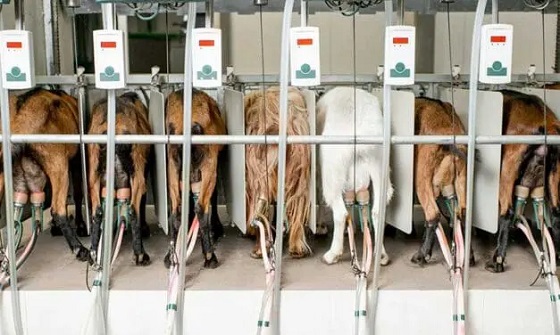
This article supplied by Troy Media.
 By Gwyn Morgan
By Gwyn Morgan
Trump is forcing the Canadian government to confront what it has long avoided: an end to supply management
U.S. President Donald Trump’s deeply harmful tariff rampage has put the Canada-U.S.-Mexico Agreement (CUSMA) under renewed strain. At the centre of that uncertainty is Canada’s supply management system, an economically costly and politically protected regime Ottawa has long refused to reform.
Supply management uses quotas and fixed prices for milk, eggs and poultry with the intention of matching supply with demand while restricting imports. Producers need quota in order to produce and sell output legally. Given the thousands of farmers spread across the country, combined with the fact that the quotas are specific to milk, eggs, chickens and turkey, the bureaucracy (and number of bureaucrats) required is huge and extremely costly. Department of Agriculture and Agri-Food 2024-25 transfer payments included $4.8 billion for “Supply Management Initiatives.”
The bureaucrats often get it wrong. Canada’s most recent chicken production cycle saw one of the worst supply shortfalls in more than 50 years. Preset quota limits stopped farmers from responding to meet demand, leaving consumers with higher grocery bills for 11th-hour imports. The reality is that accurately predicting demand is impossible.
The dysfunction doesn’t stop with chicken. Egg imports under the shortage allocation program had already topped 14 million dozen by mid-year. Our trading partners are taking full advantage. Chile, for example, is on track to double chicken exports.
The cost to consumers is considerable. Pre-pandemic research estimates the average Canadian family pays $300 to $444 extra for food as a result of supply management. And since, as a share of their income, lower-income Canadians spend three times as much as middle-income Canadians and almost five times as much as upper-income Canadians, the impact on them is proportionally much greater.
It’s no surprise that farmers are anxious to protect their monopoly. In most cases, they have paid hefty sums for their quota. If the price of their product were allowed to fall to free-market levels, the value of their quota would go to zero. In addition, the Dairy Farmers of Canada argue that supply management means “the right amount of food is produced,” producers get a “fair return,” and import restrictions guarantee access to “homegrown food,” all of which is debatable.
All price-fixing systems create problems. Dairy cattle are not machines. A cow’s milk production varies. If a farmer gets more milk than his quota, the excess must be dumped. When governments limit the supply of any item, its value always rises. Dairy quotas, by their very nature, have become a valuable commodity, selling for more than $25,000 per “cow equivalent.” That means a 100-head dairy farm is worth at least $2,500,000 in quota alone, a value that exists only because of the legislated ability to charge higher-than-market prices.
Dairy isn’t the only sector where government-regulated quotas have become very valuable. The West Coast fishery is another. Commercial fishery quotas for salmon and halibut have become valuable commodities worth millions of dollars, completely out of reach for independent fishers, turning them into de facto employees of quota holders.
While of relatively limited national importance, supply management is of major political significance in Quebec. As George Mason University and Montreal Economic Institute economist Vincent Geloso notes, “In 17 ridings provincially, people under supply management are strong enough to change the outcome of the election.”
That brings us back to the upcoming CUSMA negotiations. Under CUSMA, the U.S. gets less than five per cent of Canada’s agricultural products market. Given that President Trump has been a long-standing critic of supply management, especially in dairy, it’s certain to be targeted.
Looking to pre-empt concessions, supply-managed farmer associations lobbied the federal government to pass legislation keeping supply management off the table in any future trade negotiations. This makes voters in those 17 Quebec ridings happy, but it’s certain to enrage Trump, starting the CUSMA negotiations off on a decidedly adversarial note. As Concordia University economist Moshe Lander says: “The government seems willing even to accept tariffs and damage to the Canadian economy rather than put dairy supply management on the table.”
Parliament can pass whatever laws it likes, but Trump has made it clear that ending supply management, especially in dairy, is one of his main goals in the CUSMA review. It’s hard to see how a deal can be made without substantial reform. That will make life difficult for the federal Liberals. But the president will be doing Canadian consumers a big favour.
Gwyn Morgan is a retired business leader who has been a director of five global corporations.
Troy Media empowers Canadian community news outlets by providing independent, insightful analysis and commentary. Our mission is to support local media in helping Canadians stay informed and engaged by delivering reliable content that strengthens community connections and deepens understanding across the country.
-

 Alberta2 days ago
Alberta2 days agoDanielle Smith slams Skate Canada for stopping events in Alberta over ban on men in women’s sports
-
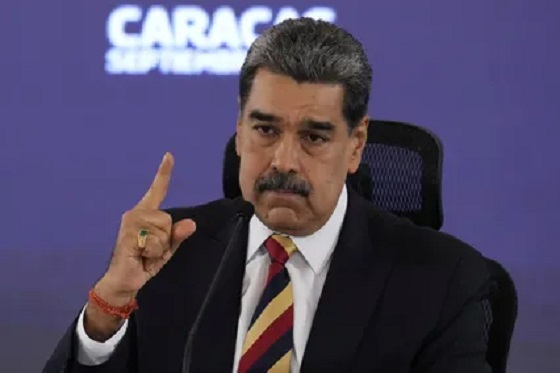
 International1 day ago
International1 day agoTOTAL AND COMPLETE BLOCKADE: Trump cuts off Venezuela’s oil lifeline
-
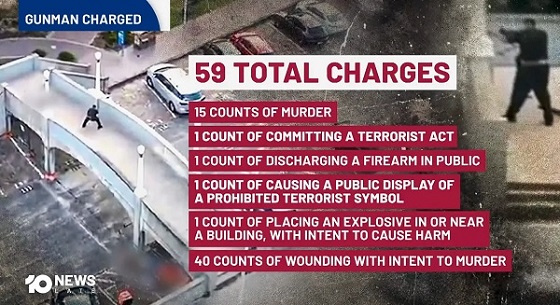
 Crime2 days ago
Crime2 days agoThe Uncomfortable Demographics of Islamist Bloodshed—and Why “Islamophobia” Deflection Increases the Threat
-
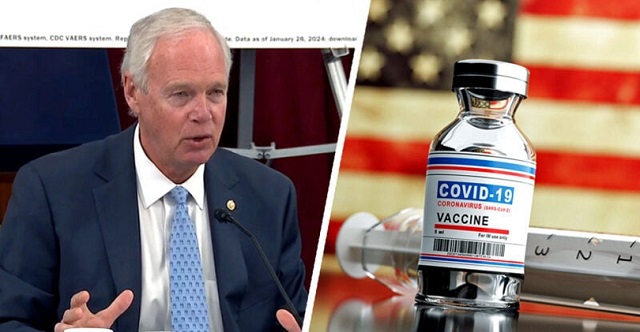
 COVID-191 day ago
COVID-191 day agoSenator Demands Docs After ‘Blockbuster’ FDA Memo Links Child Deaths To COVID Vaccine
-

 Business20 hours ago
Business20 hours agoCanada Hits the Brakes on Population
-

 Daily Caller9 hours ago
Daily Caller9 hours ago‘Almost Sounds Made Up’: Jeffrey Epstein Was Bill Clinton Plus-One At Moroccan King’s Wedding, Per Report
-
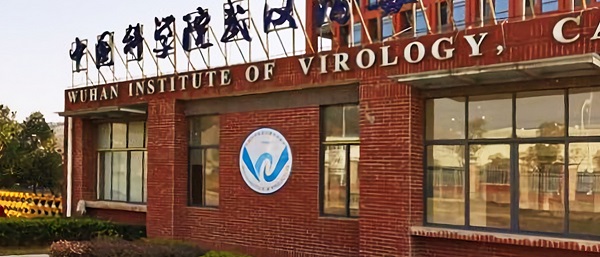
 COVID-191 day ago
COVID-191 day agoChina Retaliates Against Missouri With $50 Billion Lawsuit In Escalating Covid Battle
-
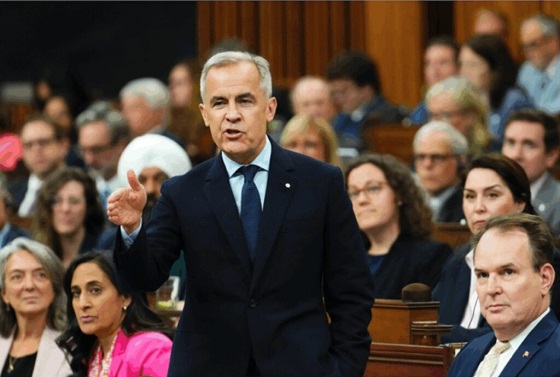
 Energy2 days ago
Energy2 days agoLiberals Twisted Themselves Into Pretzels Over Their Own Pipeline MOU







